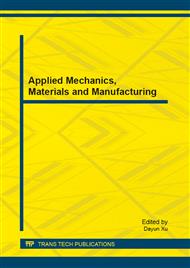[1]
Greg Gibeling, Andrew Schultz, and Krste Asanovic. The RAMP Architecture & Description Language[C], WARFP, Austin, TX, March (2006).
Google Scholar
[2]
Dan Burke, John Wawrzynek, Krste Asanovic, Alex Krasnov, Andrew Schultz, Greg Gibeling, and Pierre-Yves Droz. RAMP Blue: Implementation of a Manycore 1008 Processor System[C], Proceedings of the Reconfigurable Systems Summer Institute 2008, RSSI 2008, July (2008).
DOI: 10.1109/fpl.2007.4380625
Google Scholar
[3]
Huang Yongqin, Jing Lifeng, liu Yao, Current Situation and Trend of Reliability Technology in High Performance Computers, Journal of computer research and development, 2010, 47(4): 589-594.
Google Scholar
[4]
He Long, High performance cluster computing architecture based on the IBA engineering research institute, FUJIAN COMPUTER, 2010, 3: 92.
Google Scholar
[5]
Njuguna Njoroge, Jared Casper, Sewook Wee, Yuriy Teslyar, Daxia Ge, Christos Kozyrakis, and Kunle Olukotun. ATLAS: A Chip-Multiprocessor with Transactional Memory Support[C], Proceedings of the Conference on Design Automation and Test in Europe (DATE), Nice France, April (2007).
DOI: 10.1109/date.2007.364558
Google Scholar
[6]
Giang Nguyen thi Huong; Seon Wook Kim. Support of cross calls between a microprocessor and FPGA in CPU-FPGA coupling architecture[C], Parallel & Distributed Processing, Workshops and Phd Forum (IPDPSW), 2010. 4.
DOI: 10.1109/ipdpsw.2010.5470741
Google Scholar
[7]
Graham Schelle, Jamison Colins, Ethan Schuchman, etc. Intel nehalem processor core made FPGA synthesizable[C], Proceedings of the 18th annual ACM/SIGDA international symposium on Field programmable gate arrays, (2010).
DOI: 10.1145/1723112.1723116
Google Scholar
[8]
Kuen Hung Tsoi, Wayne luk. Axel: a heterogeneous cluster with FPGAs and GPUs[C], Proceedings of the 18th annual ACM/SIGDA international symposium on Field programmable gate arrays, (2010).
DOI: 10.1145/1723112.1723134
Google Scholar
[9]
Srinidhi Kestur, John D. Davis, Oliver Wiliams. BLAS Comparison on FPGA, CPU and GPU[C], Proceedings of the 2010 IEEE Annual Symposium on VLSI, (2010).
DOI: 10.1109/isvlsi.2010.84
Google Scholar


